Kenmore 795.78559.805, 795.78556.805, 795.78554.805, 795.78553.805, 795.78552.805 Service Manual
...
REFRIGERATOR SERVICE MANUAL
CAUTION
BEFORE SERVICING THE UNIT,
READ THE SAFETY PRECAUTIONS IN THIS MANUAL.
Model #s:
795.78542.805
795.78543.805
795.78544.805
795.78546.805
795.78549.805
795.78552.805
795.78553.805
795.78554.805
795.78556.805
795.78559.805
P/No. MFL47912428
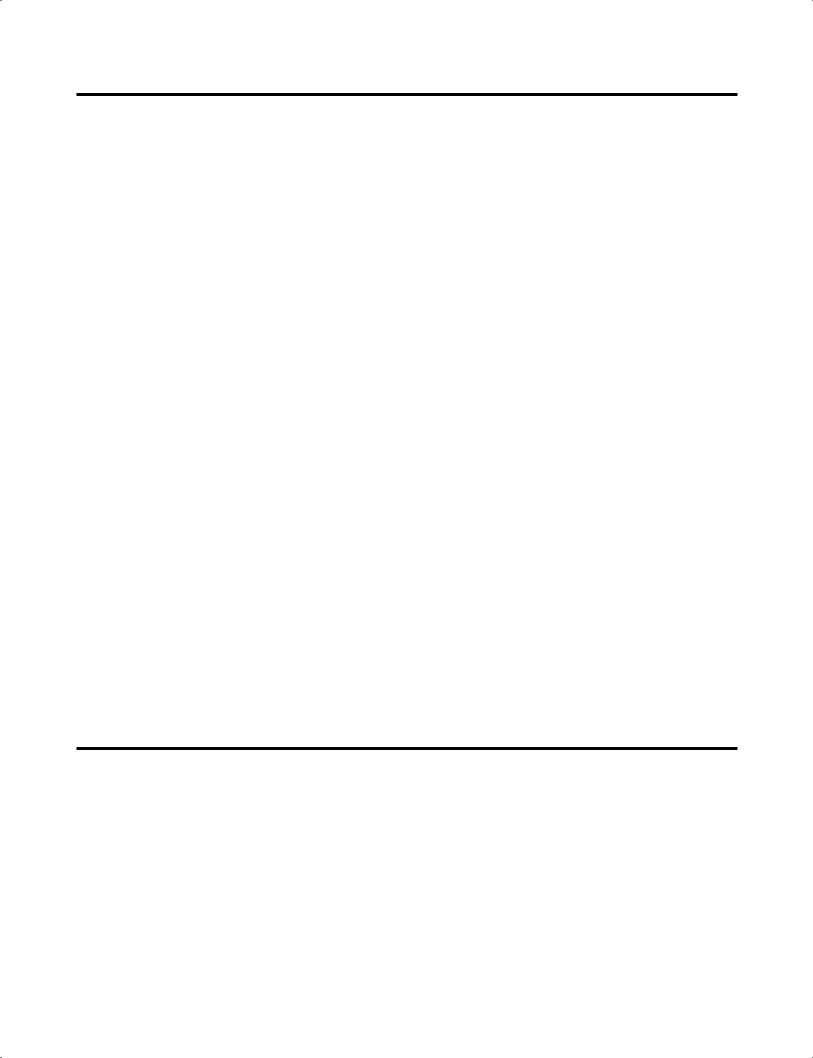
CONTENTS
SAFETY PRECAUTIONS ....................................................................................................................................................... |
2 |
|
1. |
SPECIFICATIONS ............................................................................................................................................................. |
3 |
2. |
PARTS IDENTIFICATION ................................................................................................................................................. |
4 |
3. |
DISASSEMBLY ............................................................................................................................................................ |
5-12 |
|
DOOR ............................................................................................................................................................................. |
5-8 |
|
TO REMOVE THE DISPENSER ...................................................................................................................................... |
.8 |
|
FAN AND FAN MOTOR ..................................................................................................................................................... |
8 |
|
DEFROST CONTROL ASSEMBLY ................................................................................................................................... |
9 |
|
LAMP ................................................................................................................................................................................. |
9 |
|
CONTROL BOX-REFRIGERATOR ................................................................................................................................... |
9 |
|
MULTI DUCT ..................................................................................................................................................................... |
9 |
|
HOW TO REMOVE AND REINSTALL THE PULLOUT DRAWER ............................................................................. |
10-15 |
4. ADJUSTMENT ............................................................................................................................................................. |
13-15 |
|
|
COMPRESSOR ............................................................................................................................................................... |
13 |
|
PTC-STARTER ................................................................................................................................................................ |
13 |
|
OLP (OVERLOAD PROTECTOR) ................................................................................................................................... |
14 |
|
TO REMOVE THE COVER PTC ..................................................................................................................................... |
14 |
5. CIRCUIT DIAGRAM .......................................................................................................................................................... |
15 |
|
6. TROUBLESHOOTING ................................................................................................................................................. |
17-20 |
|
|
COMPRESSOR AND ELECTRIC COMPONENTS ......................................................................................................... |
17 |
|
PTC AND OLP ................................................................................................................................................................. |
18 |
|
OTHER ELECTRICAL COMPONENTS .......................................................................................................................... |
18 |
|
SERVICE DIAGNOSIS CHART ....................................................................................................................................... |
19 |
|
REFRIGERATION CYCLE ......................................................................................................................................... |
20-21 |
7. OPERATION PRINCIPLE AND REPAIR METHOD OF ICEMAKER .......................................................................... |
22-27 |
|
8. DESCRIPTION OF FUNCTION AND CIRCUIT OF MICOM ........................................................................................ |
26-47 |
|
SAFETY PRECAUTIONS
Please read the following instructions before servicing your refrigerator.
1.Unplug the power before handling any elctrical componets.
2.Check the rated current, voltage, and capacity.
3.Take caution not to get water near any electrical components.
4.Use exact replacement parts.
5.Remove any objects from the top prior to tilting the product.
- 2 -
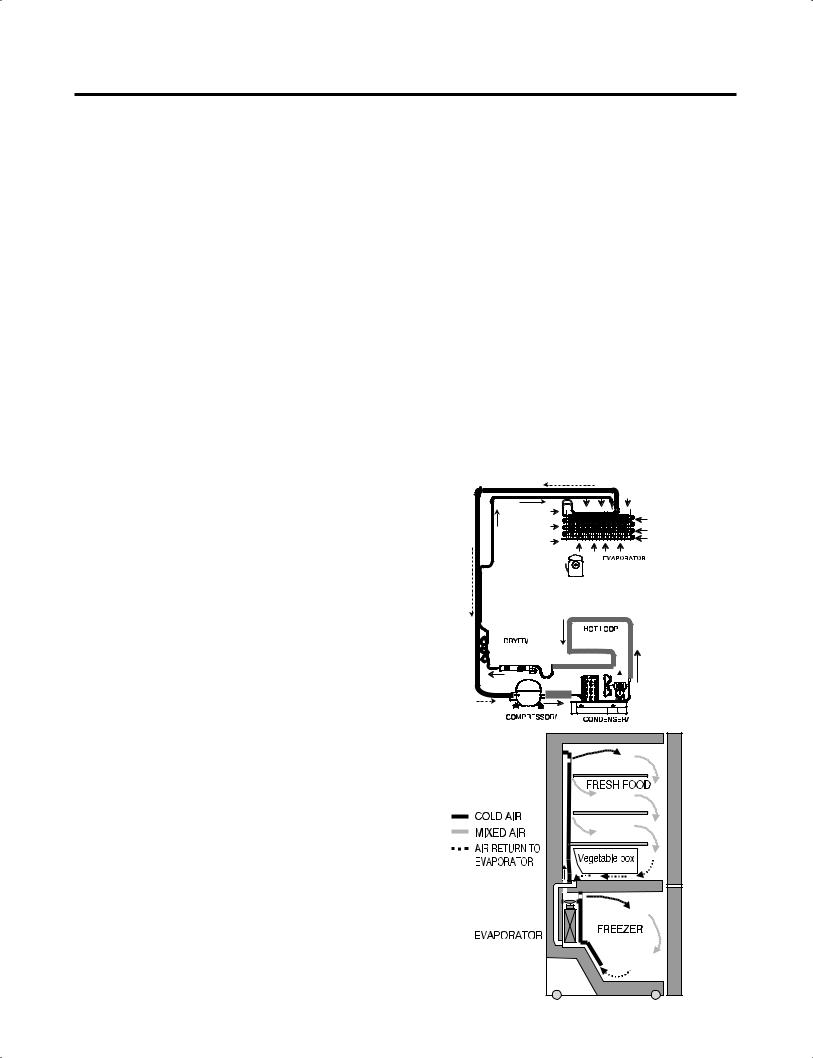
1. SPECIFICATIONS
1-1 DISCONNECT POWER CORD BEFORE SERVICING
IMPORTANT – RECONNECT ALL GROUNDING DEVICES
All parts of this appliance capable of conducting electrical current are grounded. If grounding wires, screws, straps, clips, nuts, or washers used to complete a path to ground are removed for service, they must be returned to their original positions, and properly fastened.
1-2 IMPORTANT NOTICE
This information is intended for use by individuals, possessing adequate backgrounds of electrical, electronic, and mechanical experience. Any attempt to repair a major appliance may result in personal injury and property damage. The manufacturer or seller cannot be responsible for the interpretation of this information, nor can it assume any liability in connection with its use.
1-3 ELECTRICAL SPECIFICATIONS
Temperature Control (Freezer Compartment) ...-6°F to +8°F Defrost Contro ....Total Comp Running Time : 7 hrs ~ 50 hrs
Defrost Thermostat ....................................................... |
|
46°F |
Electrical Rating : 115VAC, 60Hz ................................. |
1-5 A |
|
Maximum Current Leakage ........................................ |
0.5 mA |
|
Maximum Ground Path Resistance ..................... |
0.14 Ohms |
|
Energy Consumption ...... |
21 cu.ft. 457 kWh/yr (Energy Star) |
|
......................................... |
25 cu.ft. 476 kWh/yr (Energy Star) |
|
1-4 NO LOAD PERFORMANCE CONTROL POSITION: MID/MID
Ambient of ......................... |
70°F .................................... |
90°F |
Fresh Food, °F................... |
33°F to 41°F ........... |
33°F to 41°F |
Frozen Food, °F................. |
-4°F to +4°F ............ |
-4°F to +4°F |
Percent Running Time....... |
35%-45%.................... |
50°F-70°F |
1-5 REFRIGERATION SYSTEM
Minimum Compressor Capacity Vacuum |
..................20 MIN. |
Minimum Equalized Pressure |
|
@ 70°F .............................................................. |
52 PSIG |
@ 90°F .............................................................. |
59 PSIG |
Refrigerant R134a...................................................... |
4.41oz. |
Compressor.......................................................... |
754BTU/hr |
1-6 INSTALLATION
Clearance must be provided at top, sides, and rear of the refrigerator for air circulation.
AT REAR .........................................................................1 in
1-7 REPLACEMENT PARTS
|
25cu,ft |
|
|
795. 78542.805 |
795. 78552.805 |
|
795. 78543.805 |
795. 78553.805 |
|
795. 78544.805 |
795. 78554.805 |
|
795. 78546.805 |
795. 78556.805 |
|
795. 78549.805 |
795. 78559.805 |
Cover Relay..................................................... |
3550C-0042C |
|
Overload ......................................................... |
|
6750C-0004S |
Defrost Thermostat ........................................ |
6615JB2005H |
|
Defrost Heater ................................................ |
5300JK1005D |
|
Evaporator Fan Motor .................................... |
4681JK1004D |
|
Capacitor (Running) ...................................... |
0CZZJB2014L |
|
Compressor (Hi-Side) .................................... |
TCA34638901 |
|
Evaporator (Lo-Side) ...................................... |
|
5421JJ1003B |
Condenser .................................................... |
ACG36653801 |
|
Dryer .............................................................. |
5851JA2008U |
|
Condenser Fan Motor .................................... |
4681JB1029D |
|
Temperature Control ...................................... |
6871JB1439B |
|
Main Control ................................................... |
6871JB1423H |
|
1-8 AIR FLOW / CIRCULATION D’AIR
EVAPORTOR FAN MOTOR 
 CONDENSER FAN M
CONDENSER FAN M
- 3 -
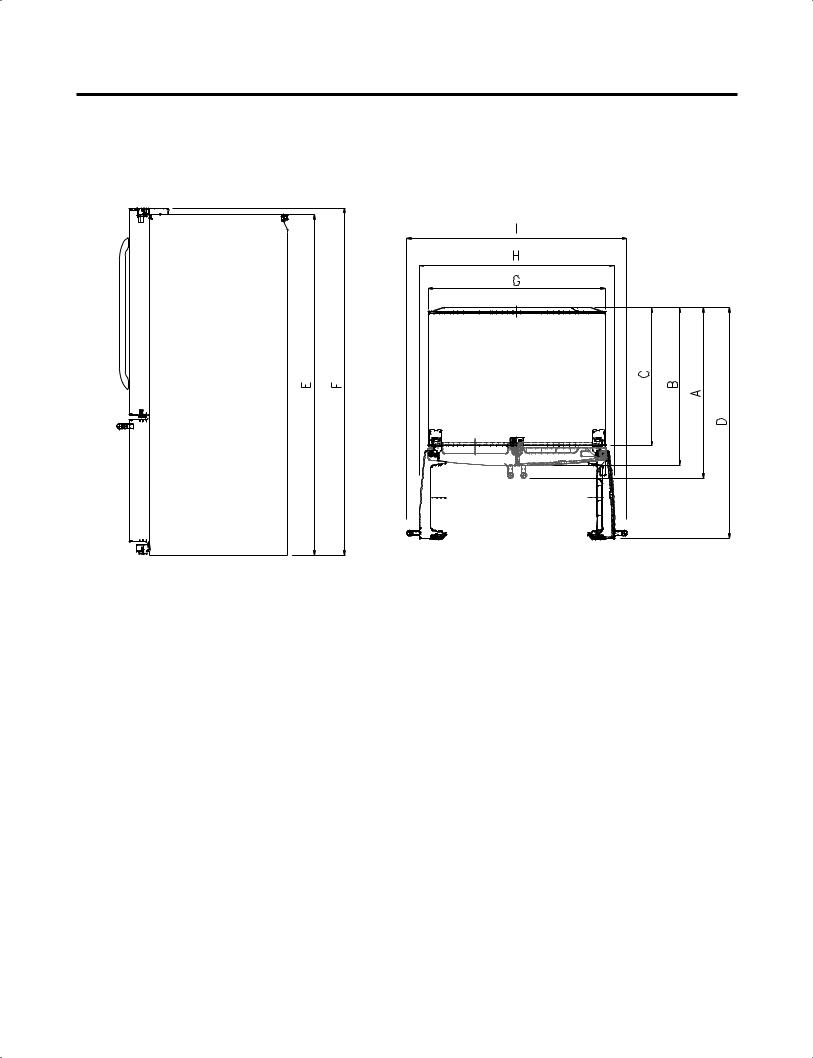
1-9 DIMENSIONS
Description |
|
795.785** |
|
|
|
Depth w/ Handles |
A |
34 1/4 in. |
|
|
|
Depth w/o Handles |
B |
31 3/4 in. |
|
|
|
Depth w/o Door |
C |
27 7/8 in. |
|
|
|
Depth (Total with Door Open) |
D |
46 1/2 in. |
|
|
|
Height to Top of Case |
E |
68 3/8 in. |
|
|
|
Height to Top of Door Hinge |
F |
69 3/4 in. |
|
|
|
Width |
G |
35 3/4 in. |
|
|
|
Width (door open 90 deg. w/o handle) |
H |
39/1/4 in. |
Width (door open 90 deg. w/ handle) |
I |
44 1/4 in. |
- 4 -
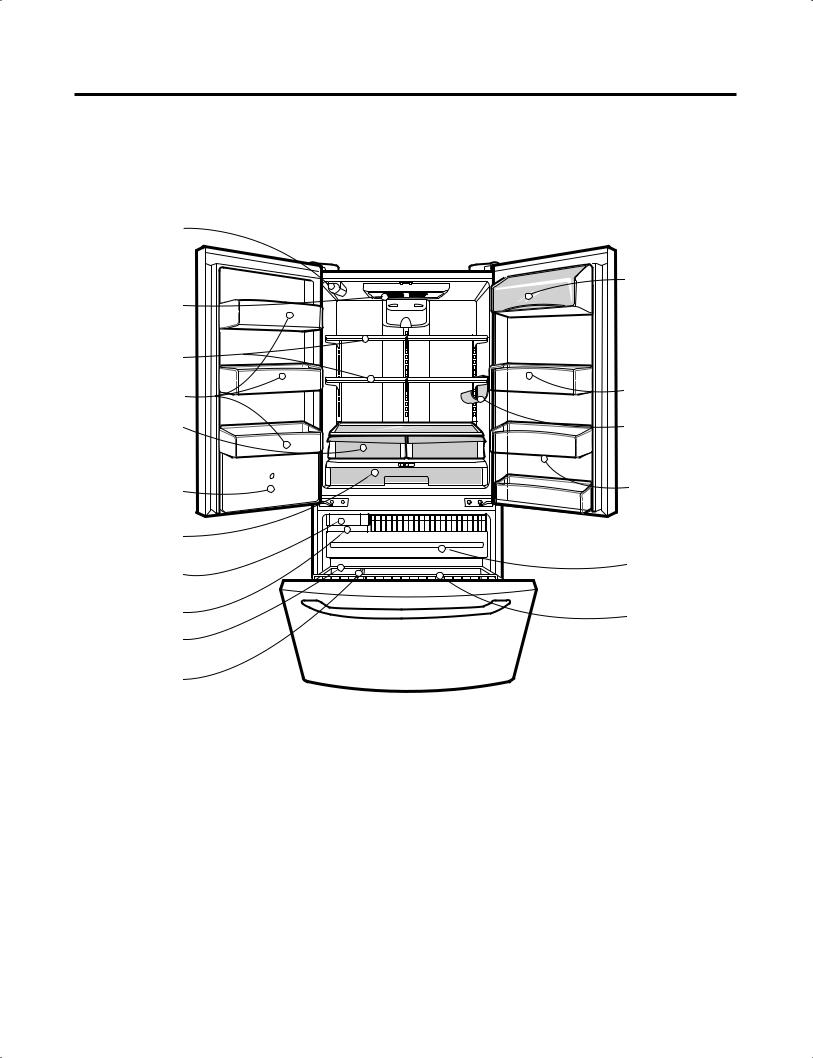
2. PARTS IDENTIFICATION
Water Filter |
|
|
|
Divider |
|
Refrigerator |
|
|
Light |
|
|
Refrigerator |
|
|
Shelves |
|
|
Door Bins |
Modular |
|
Door Bins |
||
|
||
Humidity |
Bottle Holder |
|
Controlled |
(795.7855** |
|
Crisper |
Models Only) |
|
Water Tank |
Modular |
|
Cover |
Door Bins |
|
Wide Pantry |
|
|
Drawer |
|
|
Adjusta Cube |
Pull-Out Drawer |
|
|
||
Ice Maker |
|
|
Ice Bin |
Tilt-Out |
|
|
||
Freezer |
Door Basket |
|
|
||
Drawer Bin |
|
|
Divider |
|
- 5 -
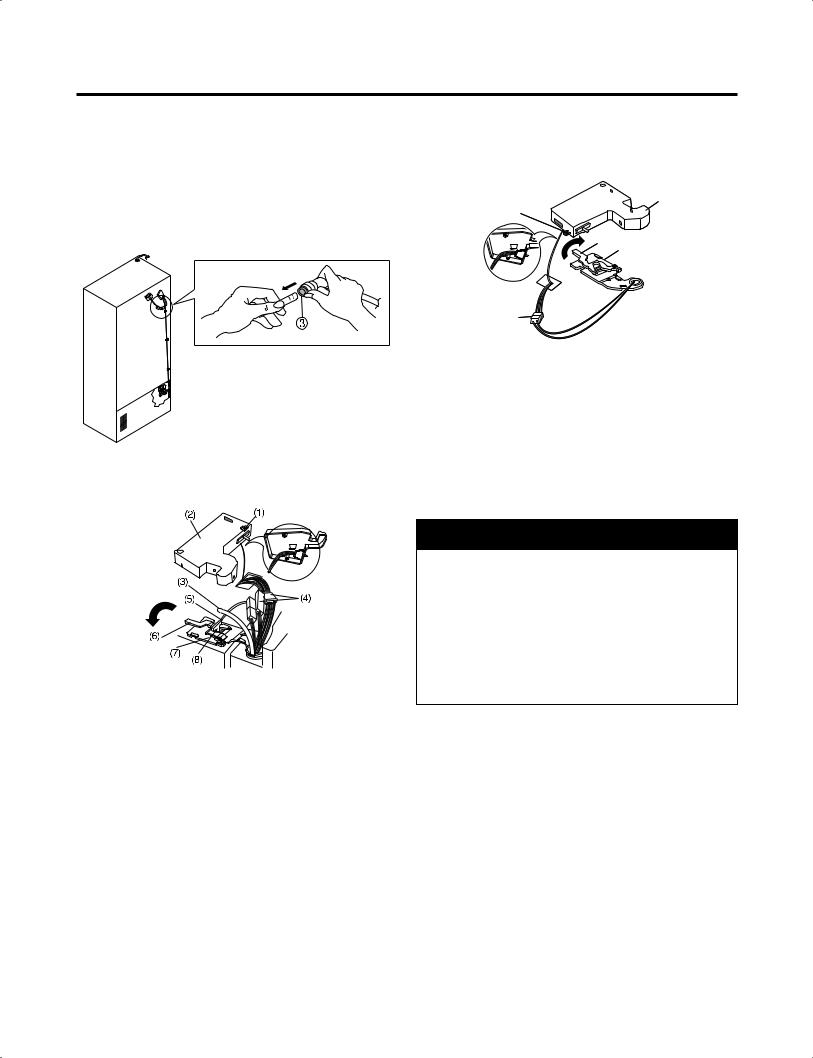
3. DISASSEMBLY
3-1 REMOVING AND REPLACING REFRIGERATOR DOORS
To remove the left refrigerator door:
Pull the water tube out of the fitting while pressing the release ring on the fitting.
When you pull out the tube, first you have to push the collet by opposite direction of arrow in the upper picture and tube pull out by direction of arrow.
 CAUTION: Before you begin, remove food and bins from the doors.
CAUTION: Before you begin, remove food and bins from the doors.
To remove the right refrigerator door:
(2)
(1)
(4)
(5)
 (6)
(6)
(3)
 Open the door. Remove the top hinge cover screw (1). Lift up the cover (2).
Open the door. Remove the top hinge cover screw (1). Lift up the cover (2).
 Remove the cover.
Remove the cover.
 Disconnect the wire harness (3).
Disconnect the wire harness (3).
 Rotate the hinge lever (4) clockwise.
Rotate the hinge lever (4) clockwise.
Lift the top hinge (5) free of the hinge lever latch (6).
IMPORTANT: When lifting the hinge free of the latch, be careful that the door does not fall forward.
 Open the door. Remove the top hinge cover screw (1).
Open the door. Remove the top hinge cover screw (1).
 Use a flat-head screwdriver to pry back the hooks (not shown) on the front underside of the cover (2). Lift up the cover.
Use a flat-head screwdriver to pry back the hooks (not shown) on the front underside of the cover (2). Lift up the cover.
 Remove the cover. Pull out the tube (3).
Remove the cover. Pull out the tube (3).
 Disconnect all the wire harnesses (4).
Disconnect all the wire harnesses (4).
 Remove the grounding screw(5)
Remove the grounding screw(5)
 Rotate hinge lever (6) counterclockwise.
Rotate hinge lever (6) counterclockwise.
Lift the top hinge (7) free of the hinge lever latch (8).
IMPORTANT: When lifting the hinge free of the latch, be careful that the door does not fall forward.
 Lift the door from the middle hinge pin and remove the door.
Lift the door from the middle hinge pin and remove the door.
 Place the door, inside facing up, on a nonscratching surface.
Place the door, inside facing up, on a nonscratching surface.
 WARNING
WARNING
Explosion Hazard
 Disconnect electrical supply to the refrigerator before installing. Failure to do so could result in death or serious injury.
Disconnect electrical supply to the refrigerator before installing. Failure to do so could result in death or serious injury.
 Do not put hands or feet or other objects into the air vents, base grille, or bottom of the refrigerator.
Do not put hands or feet or other objects into the air vents, base grille, or bottom of the refrigerator.
You may be injured or receive an electrical shock.  Be careful when you work with the hinge, base grille,
Be careful when you work with the hinge, base grille,
and stopper. You may be injured.
- 6 -

3-2 DOOR
 Door Gasket Removal
Door Gasket Removal
1.Remove door frame cover
Starting at top of cover and working down, snap cover out and away from door.
Frame Cover
Handle
Figure 1
2.Remove gasket bracket clips
There are two clips on each door. Start bracket removal near one of the middle clips.
1)Pull gasket back to expose gasket bracket clip and door frame.
2)Insert a flat tip screwdriver into seam between gasket bracket and door frame and pry back until clips snaps out.
3)Continue prying back along seam until all clips snap out.
 Door Gasket Replacement
Door Gasket Replacement
1.Insert gasket bracket clips
1)Insert gasket bracket edge beneath door frame edge.
2)Turn upper gasket bracket spring so that the spring ends are in the door channel.
3)Push in clip until you hear it snap securely into place.
Gasket
 Bracket Clip
Bracket Clip
Spring
Door
Frame
Correct |
Incorrect |
Figure 4
4) Push in remaining two clips until you hear each snap securely into place.
Note: Make sure that no part of gasket bracket edge protrudes from beneath door frame edge.
2.Insert gasket into channel
1) Snap gasket assembly into the door bracket.
Inserting the Gasket Assembly into the Bracket Door
Gasket
Door Bracket Clip
Frame
Flat Tip
Screwdriver
Gasket
Bracket
Figure 2
3.Remove gasket
Pull gasket free from gasket channel on the three remaining sides of door.
Correct
Incorrect
Figure 5
Figure 3
- 7 -

2)Press gasket into channels on the three remaining sides of door.
Figure 6
3.Replace door frame cover
Starting at top of cover and working down, snap cover back into door.
Figure 7
3-3 TO REMOVE THE DISPENSER
1.Use fiat tip screwdriver to pry back hooks on botton underside of cover dispenser.
Figure 8
2. Pry off cover dispenser.
Figure 9
Disconnect wire harness.
3.Replace cover dispenser in opposite manner and order of removal.
3-4 DOOR ALIGNMENT
If the space between your doors is uneven, follow the instructions below to align the doors:
1.With one hand, lift up the door you want to raise at middle hinge.
2.With other hand, use pliers to insert snap ring as shown.
3.Insert additional snap rings until the doors are aligned. (Three snap rings are provided with unit.)
Figure 10
- 8 -
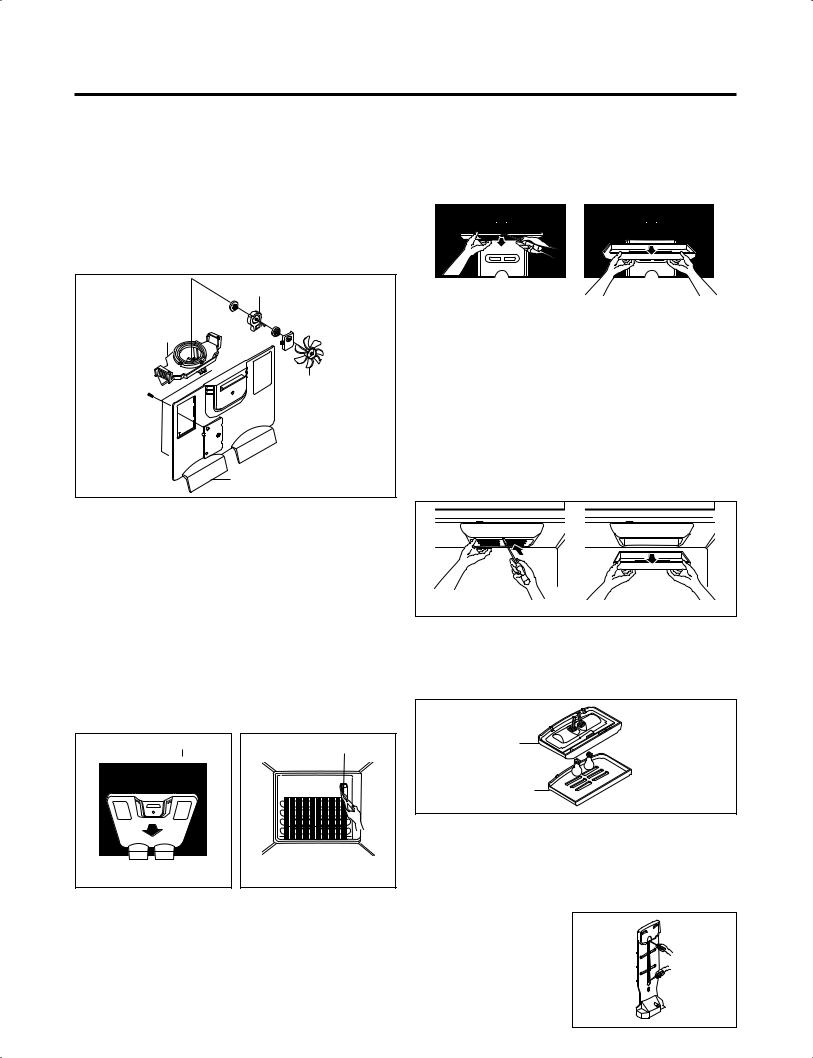
3-5 FAN AND FAN MOTOR
1.Remove the freezer shelf. (If your refrigerator has an icemaker, remove the icemaker first)
2.Remove the plastic guide for slides on left side by unscrewing phillips head screws.
3.Remove the grille by pulling it out and by loosening a screw.
4.Remove the Fan Motor assembly by loosening 2 screws and disassemble the shroud.
5.Pull out the fan and separate the Fan Motor and Bracket.
FAN MOTOR
BRACKET
MOTOR
FAN
GRILLE |
Figure 11 |
4.Make sure the bulbs are cool to the touch. Turn bulbs counterclockwise to remove.
5.Assemble in reverse order by snapping the Lamp Cover in, engaging the rear tabs followed by the front tabs. (Max. 60 W-2EA)
Figure 14
3-7-2 Freezer Compartment Lamp
1.Unplug refrigerator power cord form outlet.
2.Using a flat instrument, gently pry the lamp cover loose in the front as shown. Rotate downward to remove the rear tabs.
3.Make sure the bulb is cool to the touch. Turn the bulb counterclockwise to remove.
4.Replace with a new 60-watt appliance bulb.
5.Insert tabs on back of cover into slots in freezer ceiling. Push cover up to snap front into place.
3-6 DEFROST CONTROL ASSEMBLY
Defrost Control assembly consists of Defrost Sensor and FUSE–M.
The Defrost Sensor works to defrost automatically. It is attached to the metal side of the Evaporator and senses its temperature. At 46°F(8°C), it turns the Defrost Heater off. Fuse-M is a safety device for preventing over-heating of the Heater when defrosting. At 172.8°F(77°C), it turns the Defrost Heater off. It is attached to the between Eva pipe in the middle Evaporator.
1.Pull out the grille assembly. (Figure 12)
2.Separate the connector with the Defrost Control assembly and replace the Defrost Control assembly after cutting the Tie Wrap. (Figure 13)
GRILLE ASSEMBLY
Figure 12
DEFROST-CONTROL |
ASSEMBLY |
Figure 13 |
Figure 15 |
3-8 CONTROL BOX-REFRIGERATOR
1.First, remove all shelves in the refrigerator, than remove the Refrigerator control Box by loosening 2 screws.
CONTROL BOX
COVER LAMP
Figure 16
2.Remove the Refrigerator Control Box by pulling it downward.
3.Disconnect the lead wire on the right position and separate the lamp sockets.
3-7 LAMP
3-7-1 Refrigerator Compartment Lamp
1.Unplug Refrigerator, or disconnect power at the circuit breaker.
2.If necessary, remove top shelf or shelves.
3.Using a flat instrument, gently pry the cover loose in the front as shown. Rotate downward to remove rear tabs.
3-9 MULTI DUCT
1. Remove an upper and lower Cap by using a flat screwdriver, and loosen 2 screws. (Figure 17)
2. Disconnect the lead wire on the bottom position.
Figure 17
- 9 -

3-10 HOW TO REMOVE AND REINSTALL THE PULLOUT DRAWER
3-10-1 FOLLOW STEPS TO REMOVE
Step 1) Open the freezer door. |
Step 2) Remove the lower basket. |
Step 3) Remove the two screws from the guide rails (one from each side).
Step 4) Lift the freezer door up to unhook it from the rail support and remove.
Pull both rails to full extension.
Step 5) First: Remove the gear from the left side first by releasing the tab behind the gear, place a screwdriver between the gear and the tab and pull up on the gear.
Second: Remove the center rail.
Third: Remove the gear from the right side by following the same steps for the left side.
NOTE: THIS TAB MUST BE PUSHED IN TO RELEASE THE GEAR.
- 10 -
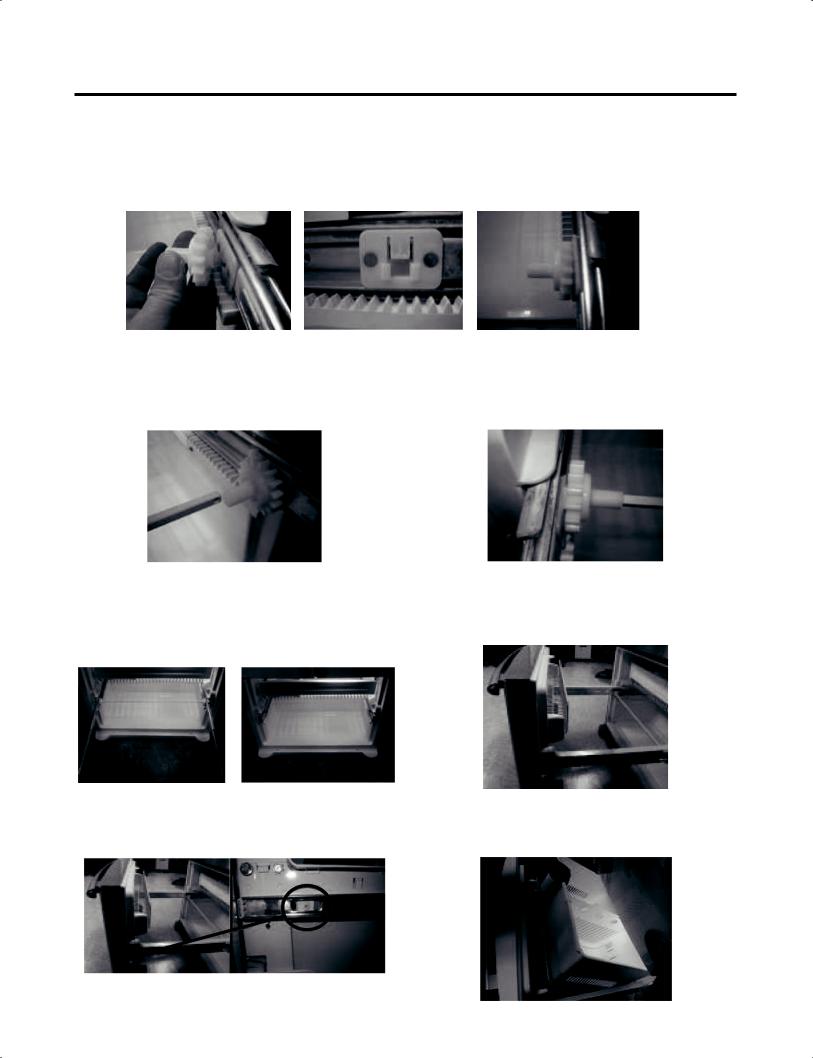
3-10-2 FOLLOW STEPS TO REINSTALL
Step 1) Reinstall the right side gear into the clip.
Step 2) Insert the rail into the right side gear. Gears do not |
Step 3) Insert the rail into the left side gear, and insert the |
need to be perpendicular to each other. |
gear into the clip. |
Step 4) The rail system will align itself by pushing the rails all the way into the freezer section.
Pull the rails back out to full extension.
Step 5) Reinstall the freezer door by inserting the rail tabs into the guide rail.
Step 6) Reinstall the two screws into the guide rails (one from each side).
Step 7) Reinstall the lower basket, and close the freezer door.
- 11 -

3-10-3 PULL OUT DRAWER
To separate the drawer, push the front left and right hooks in  direction to pull up and remove. Then gently lift the gear part of rear left and right side of the drawer and pull it out in
direction to pull up and remove. Then gently lift the gear part of rear left and right side of the drawer and pull it out in  direction.
direction.
To install, reposition the gear part of rear left and right side of the drawer after pulling out both rails as much as possible, and gently push down both left and right side while checking the hook on the front part.
- 12 -

4. ADJUSTMENT
4-1 COMPRESSOR
4-1-1 Role
The compressor intakes low temperature and low pressure gas from the evaporator of the refrigerator and compresses this gas to high-temperature and high-pressure gas. It then delivers the gas to the condenser.
4-1-2 Composition
The compressor includes overload protection. The PTC starter and OLP (overload protector) are attached to the outside of the compressor. Since the compressor is manufactured to tolerances of 1 micron and is hermetically sealed in a dust and moisture-free environment, use extreme caution when repairing it.
4-1-3 Note for usage
(1)Be careful not to allow over-voltage and over-current.
(2)If compressor is dropped or handled carelessly, poor operation and noise may result.
(3)Use proper electric components appropriate to the particular compressor in your product.
(4)Keep compressor dry.
If the compressor gets wet (in the rain or a damp environment) and rust forms in the pin of the Hermetic Terminal, poor operation and contact may result.
If the hermetic connector rusts out or fails, refrigerant and oil will be expelled into the contact area, probably resulting in smoke and fire.
(5)When replacing the compressor, be careful that dust, humidity, and soldering flux don’t contaminate the inside of the compressor. Contamination in the cylinder may cause noise, improper operation or even cause it to lock up.
4-2 TSD STARTER
-The TSD must not be applied to refrigeration systems with defrosting electrical resistance or any other component in parallel to the thermostat. Systems with this configuration can maintain a residual voltage over the compressor when the thermostat is opened, obstructing the proper functioning of the TSD. It is vital for the TSD circuit and compressor to remain completely deenergized after opening the thermostat.
-Use of the fixing clamp is essential, as this prevents disconnection or bad TSD contact in relation to the compressor as well as to running capacitor in relation to the TSD. The ones that assemble it have to guarantee a perfect connection between the parts. Bad contacts and sparking can burn out the electronic circuit.
-The electronic circuit was designed taking the mandatory use of the running capacitor into consideration.
The 115V version is rect angular box, assembling directly onto the TSD body .
-The plastic box was projected to offer protection against contamination and mechanical shock normally present in refrigeration system production lines.
-The TSD's internal components may undergo degradation when in contact with chemical elements such
as CI2, H2S, NH3, SOX, NOX. Some plastic isolation of cables may release chemical elements when submitted to high temperature conditions. Thus, check if the isolation of the cables used on the terminal board are in accordance with this recommendation.
4-2-3 TSD-Applied circuit diagram
 Starting Method for the Motor
Starting Method for the Motor
ELECTRICAL AND DIMENSION DIAGRAM
ELECTRICAL CONNECTION DIAGRAM
|
|
|
|
|
|
|
|
4-2-4 Reference
-The TSD was designed for the operation with a run capacitor and Embraco domestic compressor; any other application must be previously evaluated by Embraco’s technical team.
-Embraco reserves the right to check the customer's handling of the manufacturing / assembly process, indicating possible adjustments should any be required.
-After replacement, the compressor and it’s accessories must have proper processing, and the components must be recycled according to the material group (ferrous, non-ferrous, polymers, oils, ...) directives.
These recomendations are intended to minimize the
adverse impacts that may be caused to the environment.
- 13 -
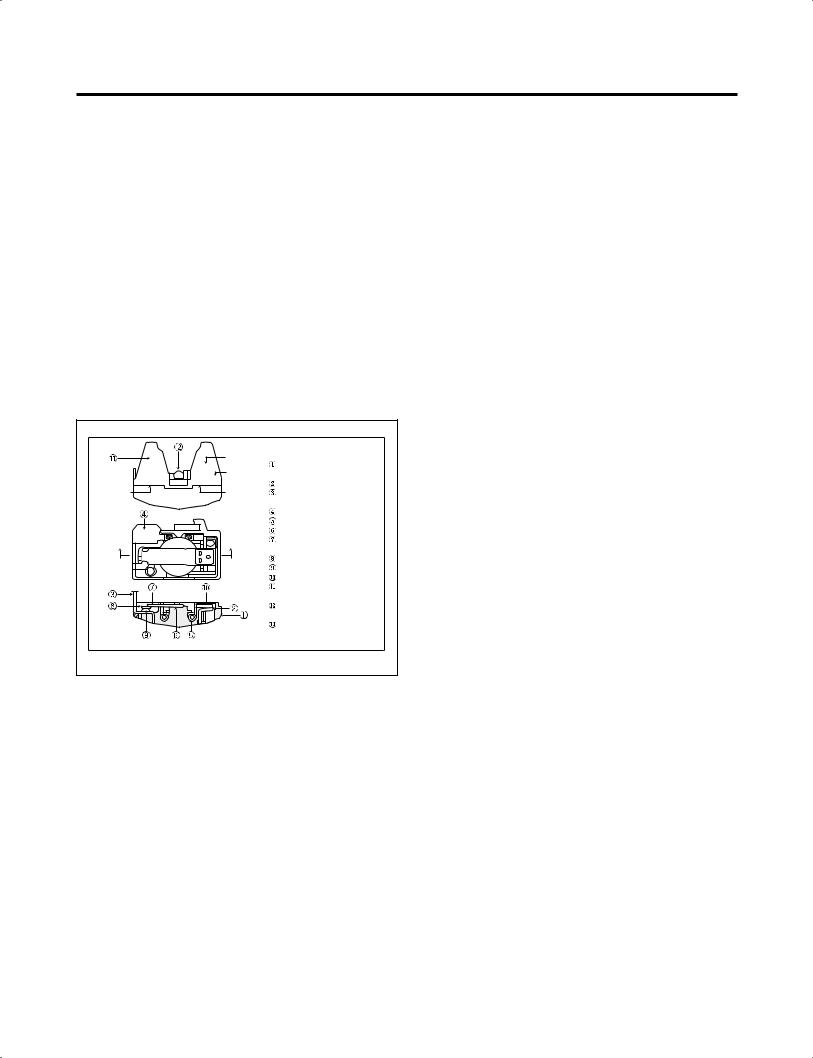
4-3 OLP (OVERLOAD PROTECTOR)
4-3-1 Definition of OLP
(1)OLP (OVERLOAD PROTECTOR) is attached to the Compressor and protects the Motor by opening the circuit to the Motor if the temperature rises and activating the bimetal spring in the OLP.
(2)When high current flows to the Compressor motor, the Bimetal works by heating the heater inside the OLP, and the OLP protects the Motor by cutting off the current flowing to the Compressor Motor.
4-3-2 Role of the OLP
(1)The OLP is attached to the Sealed Compressor used for the Refrigerator. It prevents the Motor Coil from being started in the Compressor.
(2)For normal operation of the OLP, do not turn the Adjust Screw of the OLP in any way.
, .(; 93 ; 5( 5 ; & /
|
|
|
|
|
|
|
|
|
) * |
) |
|
|
!"# |
|
+ $'& |
||
|
|
|
,- |
. / |
|
|
|
|
|||
|
|
0 1 ' + ' ' |
|||
|
|||||
|
|
|
|||
(' & ' |
|
$% & ' |
& % + |
||
$& & |
|
& & |
' ' |
||
|
|
|
|||
|
|
|
2 + ' ' |
||
|
|
|
2 + & '' % |
||
|
|
|
3& + $& '' % |
||
|
|
|
0 1 ' + & 4 |
||
|
|
|
'' % |
||
|
|
|
+ 1 ' + &'1 |
||
|
|
|
+ & %+ &'1 |
||
|
|
|
' 4+ ' ' |
||
|
|
|
1 + '% |
||
|
|
|
,- |
. / |
|
|
|
|
& + ' '' % |
||
|
|
|
,5 4 4 * *"" & * & / |
||
|
|
|
6 & 7 & '+ + |
||
|
|
|
8 - + 0(09 |
||
|
|
|
3 + 3:) " |
||
Figure 19
- 14 -
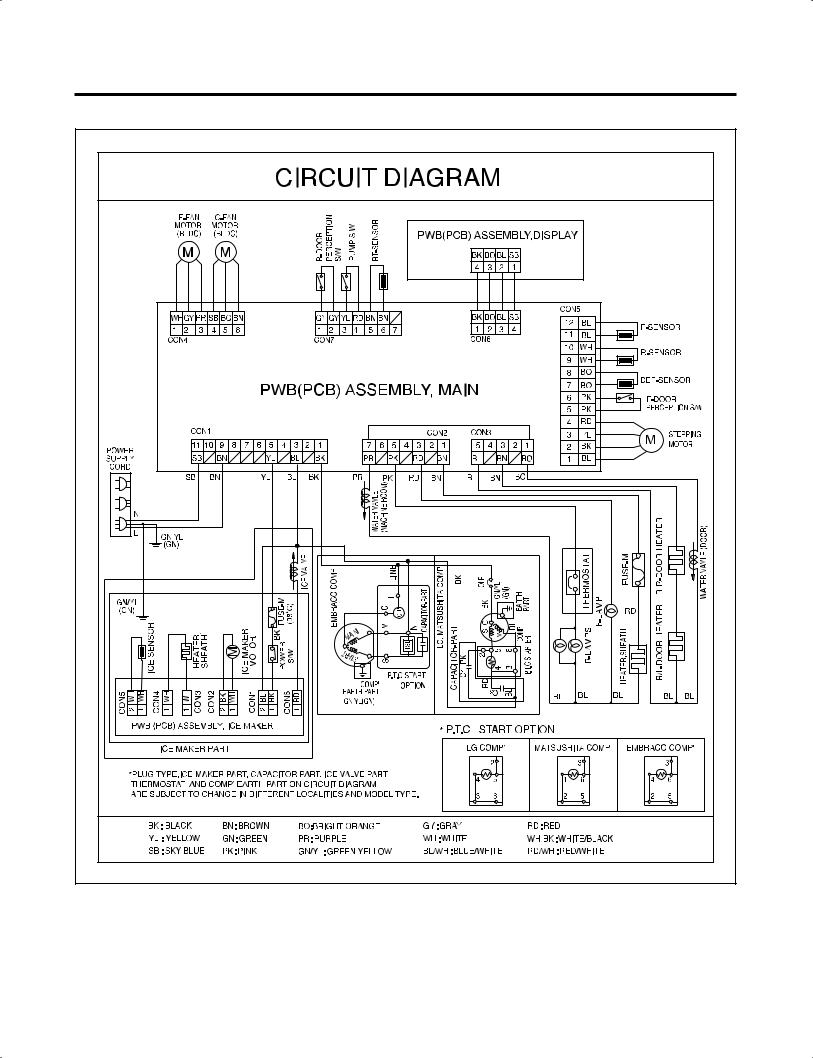
5. CIRCUIT DIAGRAM
- 15 - |
